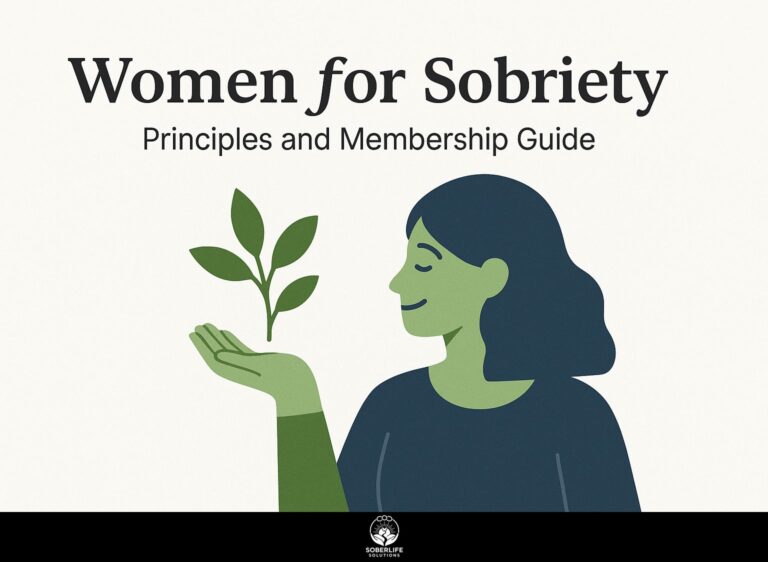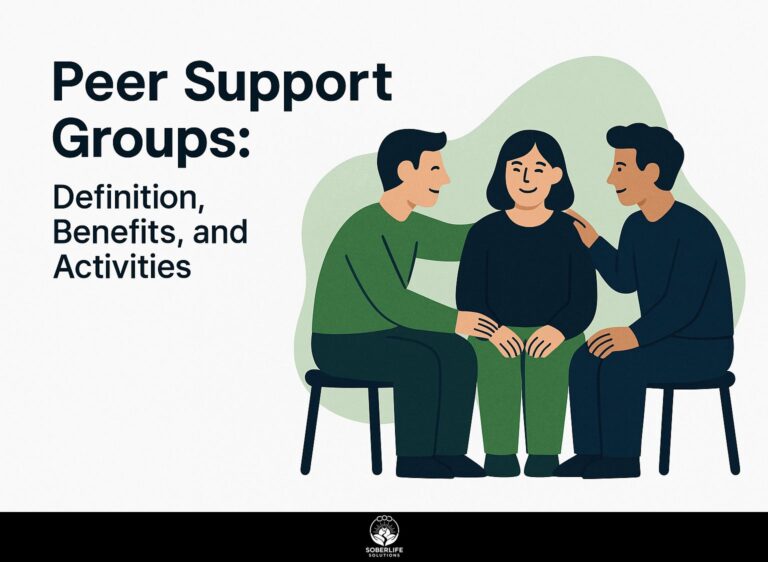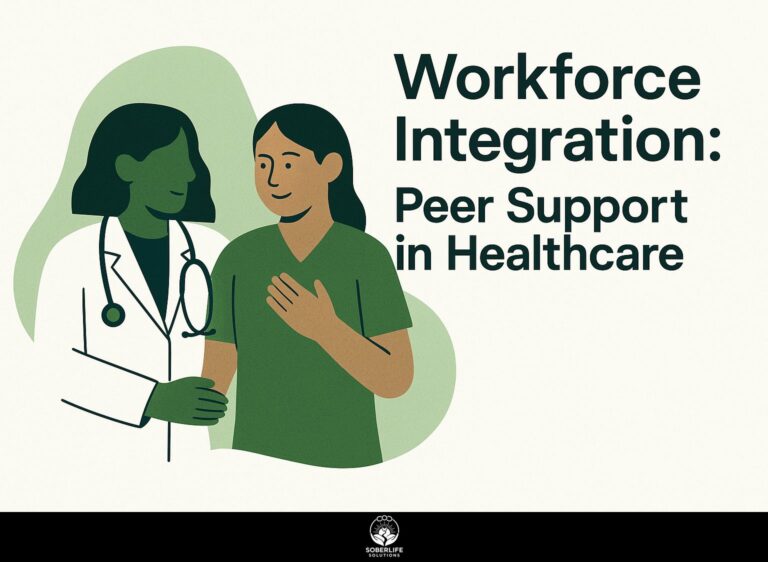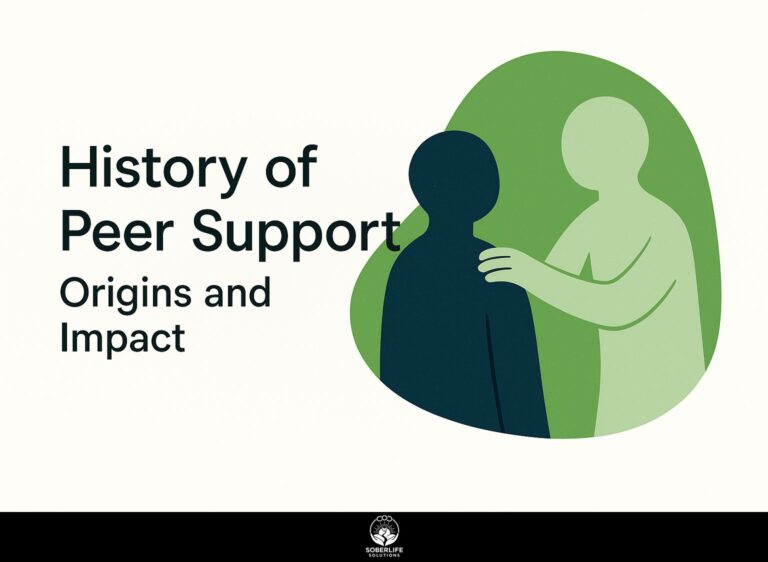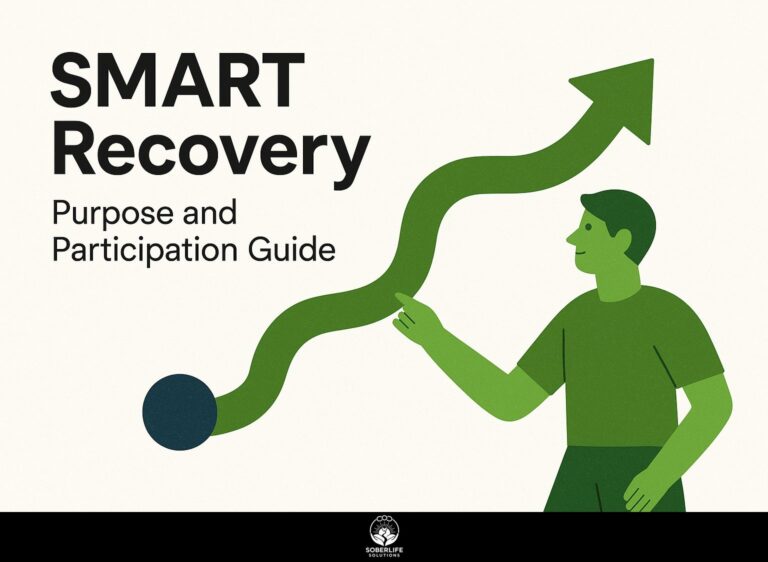Men’s Peer Support Groups: Benefits and Joining
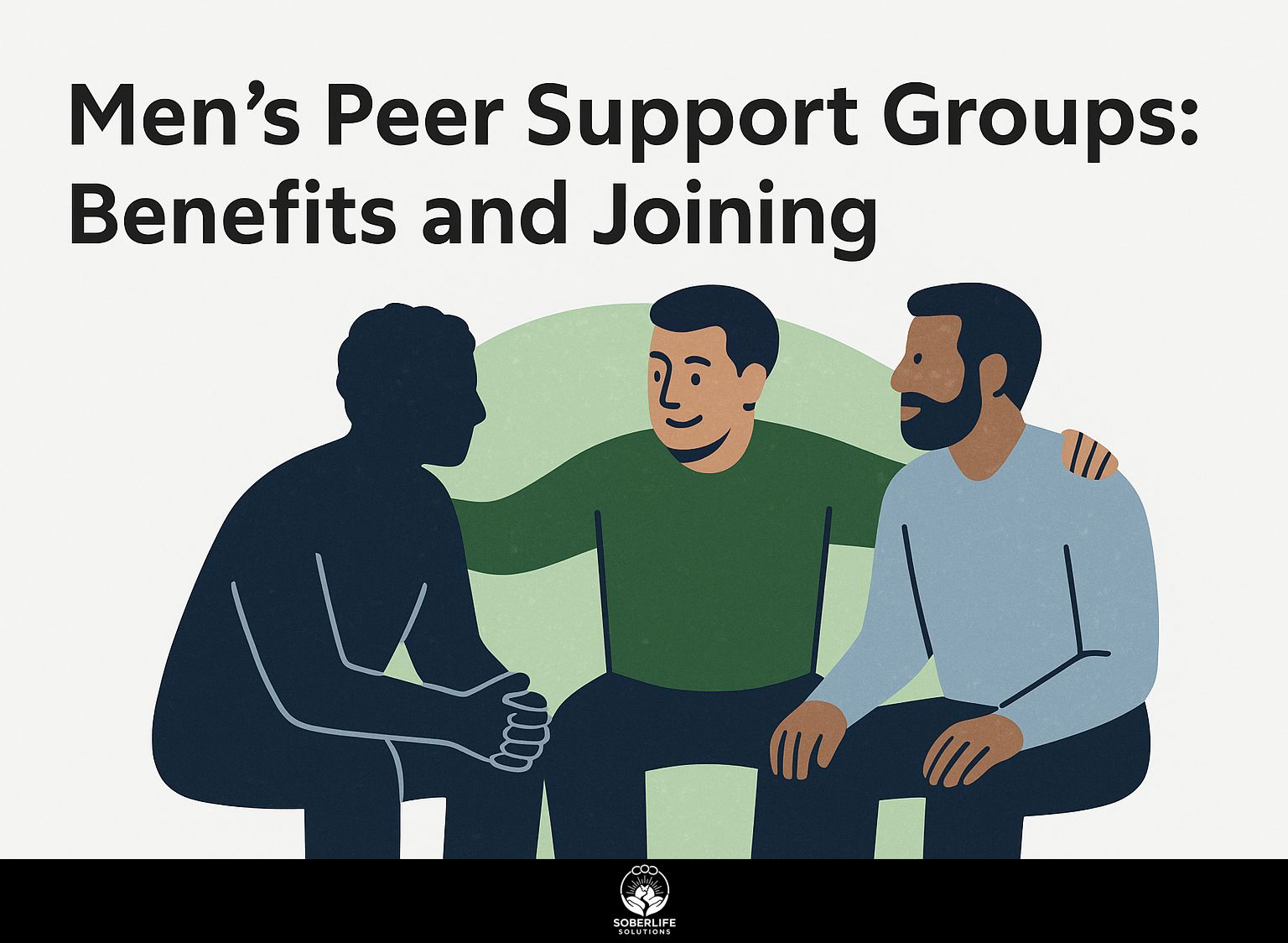
In today’s fast-paced world, many men grapple with mental distress, often feeling isolated in their experiences. Men’s peer support groups offer a safe space where people can share and manage stress, build connections, and understand each other better. By joining these support groups, men can get important emotional help and form strong friendships. This article looks at the advantages of men’s peer support groups and helps you find one that suits you.
Key Takeaways:
Benefits of Joining Men’s Peer Support Groups
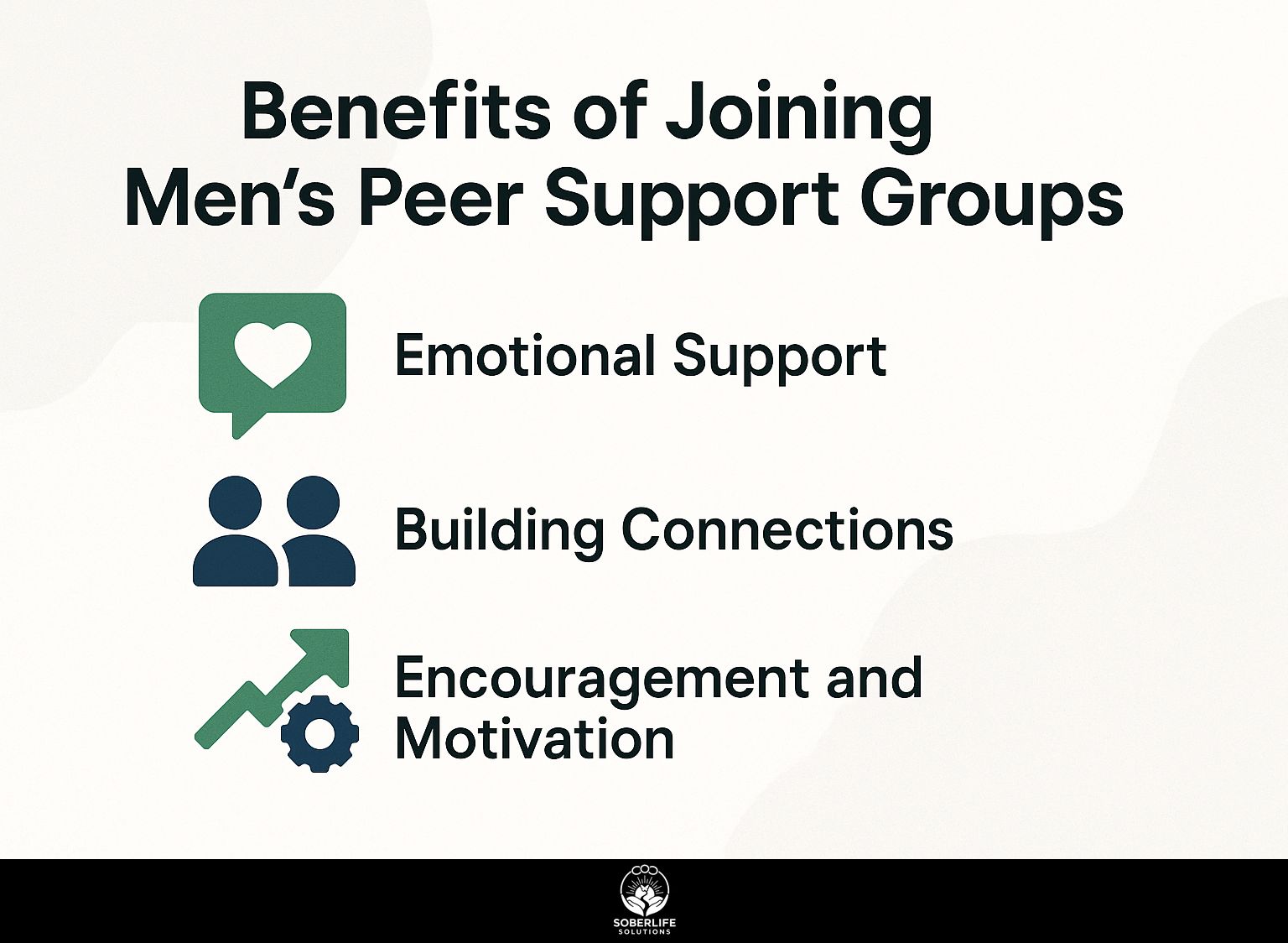
Joining a men’s peer support group can greatly help improve emotional well-being and build social connections, creating a feeling of community. For an extensive analysis of how peer support roles like these impact individuals, our comprehensive study on peer support roles explores various aspects including specialists, advocates, and providers.
Emotional Support
Men’s peer support groups provide important emotional help. They help members deal with issues such as anxiety and depression by sharing their experiences.
These groups create a safe space for men to express their feelings, reducing stigma surrounding mental health. Studies by Broughton et al. highlight that participants report increased emotional resilience, as members share personal stories and coping strategies.
For example, going on hikes together can build teamwork and trust, which can result in more meaningful conversations. Oliffe et al. found that shared activities, like group talks about personal feelings, improve how people manage emotions.
By participating in these helpful interactions, men realize they are not alone in their difficulties, allowing for recovery and self-improvement. This aligns with findings from Cambridge University Press, which suggests that peer support can significantly enhance mental health outcomes.
Building Connections
Joining peer support groups improves social connections and reduces loneliness and isolation that many men experience.
These groups help people connect by offering a safe environment to share their experiences.
For instance, organizations like ‘Men’s Sheds’ offer workshops where men participate in hands-on activities while building friendships. Likewise, ‘Better Man’ programs organize regular gatherings centered around mental health talks, encouraging attendees to share their weaknesses.
Using tools like Meetup or Zoom for online meetings allows people in distant locations to participate. As highlighted by Better Health Channel, strong relationships are essential for mental well-being, and these tools can facilitate such connections. The rise of virtual recovery groups also demonstrates how technology can bridge geographical gaps and foster supportive networks.
By focusing on trust and openness, these groups build long-lasting friendships and create a support system to combat loneliness.
Encouragement and Motivation
Men’s peer support groups serve as a powerful motivation source, encouraging individuals to pursue personal growth and mental health management strategies.
These groups provide a welcoming space where members talk about their challenges and achievements, making everyone feel part of the group.
For instance, a group can implement weekly goal-setting sessions where each member outlines their objectives and reports back on progress.
Using tools like Habitica for tracking goals or Zoom for online meetings can improve accountability.
Examples of success, such as people managing anxiety or reaching fitness goals with group support, show how effective these groups can be.
Setting individual goals in this community strengthens dedication and determination, leading to substantial progress.
Types of Men’s Peer Support Groups
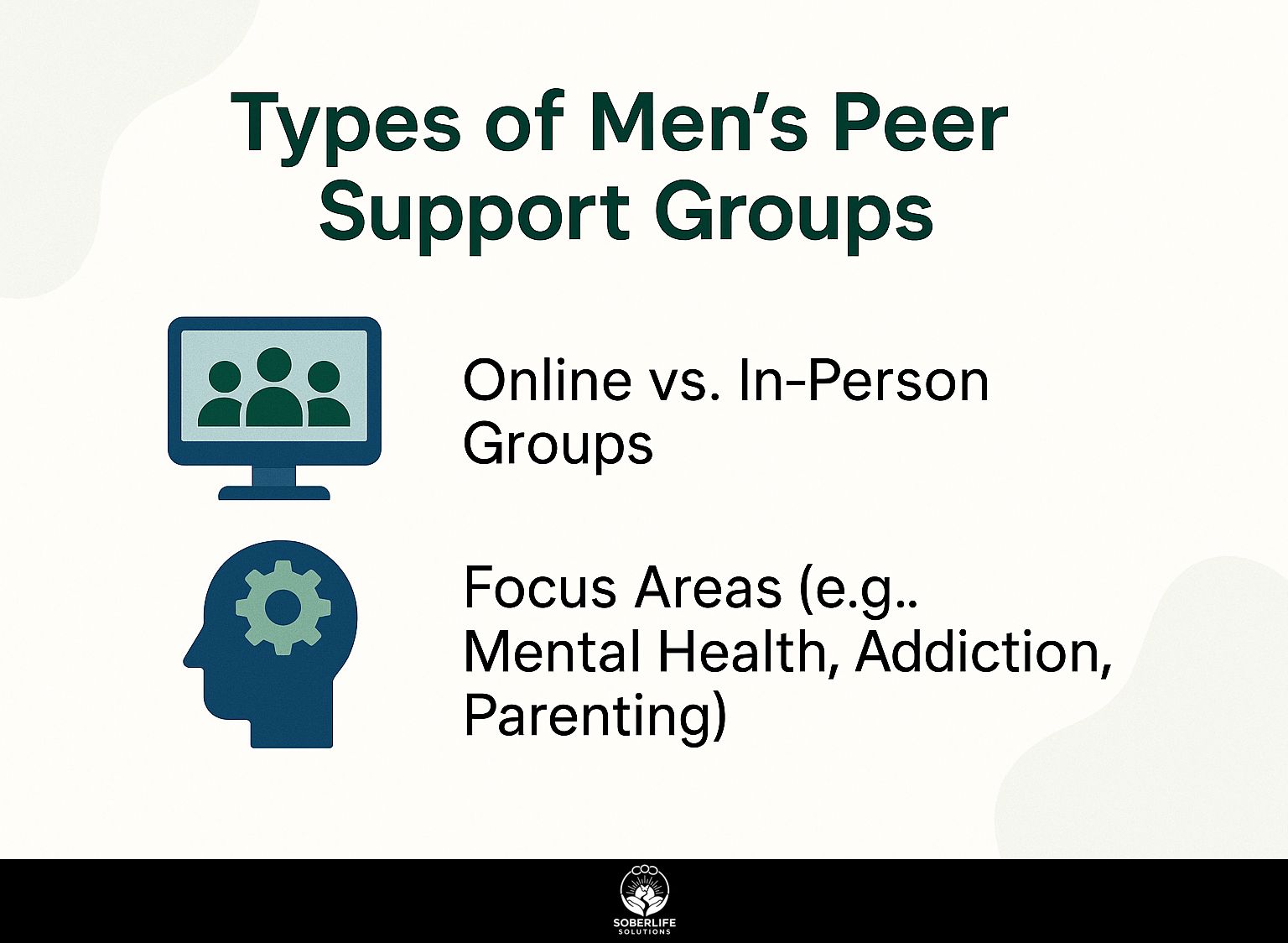
Men’s peer support groups are available in different types, designed to address particular needs, through online platforms or face-to-face gatherings. These groups play a crucial role in combating loneliness and isolation, which can greatly impact an individual’s well-being. (Read more about how peer support combats loneliness.)
Online vs. In-Person Groups
Online support groups are convenient and easier for more people to join, while meeting face-to-face helps build personal connections and responsibility.
Online support groups, like those on platforms such as Facebook or Reddit, allow participants to connect anytime, creating a diverse and expansive community. They can sometimes lack the same emotional depth as face-to-face interactions.
On the other hand, local groups such as NAMI or meetup organizations offer organized settings that help build trust and closer bonds, but they usually need participants to follow set schedules. A recent publication by ResearchGate compares the efficacy of online versus face-to-face group interventions, highlighting these differences.
In the end, the choice depends on what you prefer: some people may like the privacy and ease of online connections, while others may prefer the direct support of face-to-face meetings.
Focus Areas (e.g., Mental Health, Addiction, Parenting)
Men’s peer support groups often specialize in various focus areas, including mental health, addiction recovery, and parenting, addressing specific challenges faced by participants.
For example, organizations like Men’s Sheds help men build friendships and take part in practical tasks, creating a community for those experiencing loneliness.
In contrast, 12-Step programs address addiction recovery by providing a structured approach backed by shared experiences.
Organizations such as the Dad’s Network create safe spaces for fathers to discuss parenting challenges, enhancing their skills and emotional well-being.
Each group provides emotional help and practical tools designed for the particular needs of its members.
How to Find a Men’s Peer Support Group
Locating a suitable men’s peer support group involves exploring various resources, including community organizations and mental health services like the NHS.
Start by using online platforms such as Meetup, where you can find local groups focused on men’s issues. Check psychology directories like Psychology Today for listings specific to your area.
Local charities often host support sessions-contact them directly to inquire about ongoing groups. Don’t hesitate to ask healthcare providers for referrals; many are connected with community services that facilitate peer support. Additionally, you may want to consider some key tips for choosing the right support group to ensure it meets your specific needs.
Using these approaches will improve your likelihood of joining the right group for your requirements.
Joining a Men’s Peer Support Group: What to Expect
When you join a men’s peer support group, you’ll find a friendly place where people talk openly and share what they’ve been through.
In the initial meetings, members will take part in group discussions that emphasize privacy, ensuring that personal stories remain confidential. This creates a safe space for exploration and discussion.
Participating is encouraged because exchanging ideas benefits everyone and helps personal growth.
Tools like talking sticks or guided questions can help facilitate dialogue, providing structure while allowing diverse voices to be heard.
New members should open up and share their feelings, as this often creates stronger connections and help from other members.
Overcoming Barriers to Participation
Many men face barriers to participation in support groups, including stigma, lack of awareness, and fear of vulnerability.
To address these problems, creating a friendly atmosphere is important. Start by promoting these groups through platforms men trust, such as sports events or workplaces.
Next, create introductory sessions that emphasize confidentiality and the non-judgmental nature of discussions, easing fears of vulnerability.
Showing stories from people who have taken part before can make asking for help feel more ordinary. Consider partnering with male community leaders or influencers to advocate for participation, highlighting the mental health benefits of these groups. Related insight: Peer Support Groups: Definition, Benefits, and Activities.
This method can greatly lessen stigma and motivate involvement.
Frequently Asked Questions
What are men’s peer support groups?
Men’s peer support groups are groups of men who come together to provide emotional and social support to one another. They share their experiences, struggles, and successes in a safe and nonjudgmental environment.
What are the benefits of joining a men’s peer support group?
Joining a men’s peer support group can offer many benefits including a sense of belonging, greater self-awareness, better mental health, and the creation of strong and meaningful friendships.
How can I find a men’s peer support group to join?
You can find men’s peer support groups through online resources, community centers, mental health organizations, or by reaching out to friends or family members who may already be a part of a group.
Do I have to share my personal experiences in a men’s peer support group?
No, participation in a men’s peer support group is completely voluntary. You can share as much or as little as you feel comfortable with. The most important thing is to listen and support others in the group.
Are men’s peer support groups only for men with specific issues or problems?
No, men’s peer support groups are open to all men, regardless of their backgrounds or struggles. It is a space for men to connect and support one another in their personal growth and development.
What can I expect from my first men’s peer support group meeting?
Each men’s peer support group may vary, but usually, you’ll find a friendly place where you won’t be judged. You may be asked to introduce yourself and share why you have decided to join the group. Some groups may have a specific topic or discussion planned, while others may have more open conversations.

